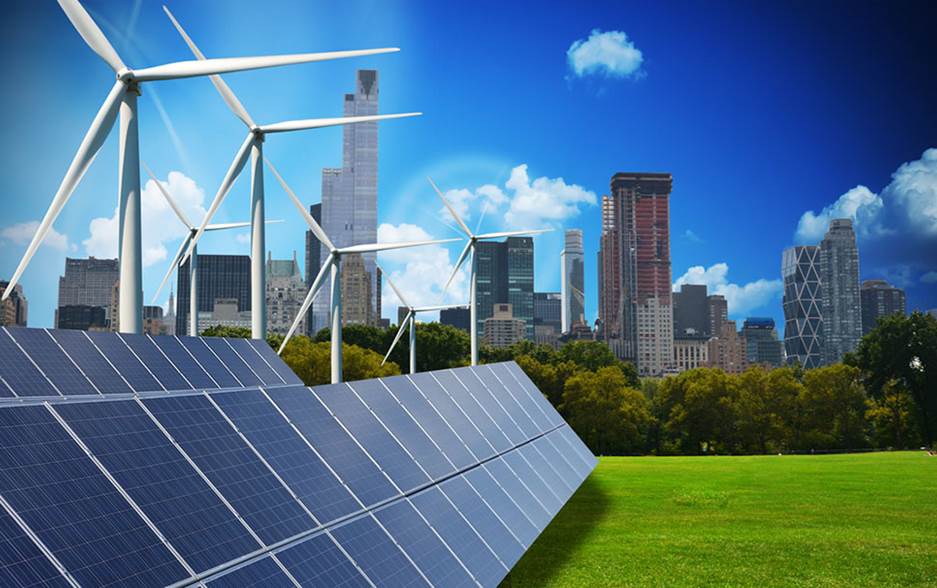
The good news is that we finally have developed the tools to solve this crisis. What we needed was a cheap way to replace our dependence on fossil fuels, and up till 2010, that simply did not exist. But in the following ten years, the costs of clean renewable energy, particularly solar and wind, have plummeted
We Are Not Facing Climate Doom
By Nayyer Ali MD

The single biggest global economic and environmental challenge of the current day is climate change. The pumping of billions of tons of carbon dioxide into the atmosphere every year from the burning of coal, oil, and natural gas is changing our very atmosphere, with levels of carbon dioxide now almost 50% higher than before the Industrial Revolution.
While still a trace gas in the air, it has a potent effect on the climate due to its ability to trap heat and slows its discharge back into outer space. This greenhouse effect is not huge, the Earth’s temperature has risen about 1 degree centigrade so far, but our natural world would experience major changes if we let the temperature rise much further.
The good news is that we finally have developed the tools to solve this crisis. What we needed was a cheap way to replace our dependence on fossil fuels, and up till 2010, that simply did not exist. But in the following ten years, the costs of clean renewable energy, particularly solar and wind, have plummeted. Solar power and lithium ion battery costs have Dr opped over 90%, while onshore wind power Dr opped by almost 60%. Combined these have led to three major changes.
First, the cheapest source of electric power now is wind and solar, though they are not constant as the sun doesn’t shine 24 hours a day nor does the wind blow. But power can be stored in batteries for later, and when the sun is shining or the wind blowing, these systems can generate massive amounts of energy. Secondly, the low cost of batteries has made electric vehicles affordable, and the end of the gasoline era is now visible. Finally, new technologies are allowing us to take fossil fuels out of heating and industrial processes, which is another major source of carbon emissions.
In the last twenty years the world built a total of 2,500 gigawatts of renewable energy capacity. In the next five years, the world is going to double that. In addition, electric vehicle sales have taken off. They now make up 25% of new car sales in China, the world’s largest vehicle market.
The US is not at that point, but EV sales were 6% of total in 2022, and 12% in California. Projections are that California will be at 70% of all new vehicle sales by 2030, and the state is banning sales of new gasoline cars after 2035. Other blue states will follow California, and auto makers can see where the future is heading. They will likely shut down their gasoline car production once we reach a global tipping in the next decade.
The oil giant British Petroleum projects in its net zero model that oil demand will collapse from 100 million barrels daily at present to 20 million barrels by 2050.
This year renewables have outpaced coal for total electricity production in the US, and globally, wind and solar produced more power than did nuclear in 2022. The International Energy Association projects that renewables will be the single largest source of electricity around the world by 2025, overtaking coal.
In the US, the energy transition is about to be greatly accelerated by policy change. The IRA (Inflation Reduction Act) that Biden signed into law last summer is going to unleash over a trillion dollars of investment in clean energy. The electricity sector and the automotive sectors are both going to be rapidly decarbonized.
If we are making such great progress, then why do some still have such a sense of doom? Partly it is human nature to be pessimistic and worry about the future. But in part it is due to climate activists who genuinely believed the only way to get the public to act was to scare it with stories of the end of life on Earth. This was deeply irresponsible and not backed by the actual science. The Earth was in fact warmer only a hunDr ed thousand years ago during the last interglacial, and both nature and human beings survived that time. This is not to minimize or dismiss the challenge, but it is not something that will actually end life on Earth. In fact, for most of Earth’s history, the planet has been far warmer, and usually does not have polar ice caps. We are currently living in a geologically cool time for the planet.
But if the Earth did warm another 2 or 3 degrees it would be very disruptive to our civilization. Summers would get much hotter in some parts, Dr ought would affect others, and sea levels would rise. Some species may not be able to adapt to a warmer Earth and go extinct. It makes sense that we do everything we can to avoid that future.
Twenty years ago, there was real fear that unchecked use of fossil fuels in this century could lead to 5 degrees centigrade of warming. We have clearly avoided that worst case scenario. We are now looking at about 2 degrees of warming. The question for the next thirty years is can we push that down a bit more?
In addition to our current technologies, the next generation could come up with some new possibilities that might make a huge difference. One is fusion power. That has been researched for decades, but so far it is not technically feasible. However, major advances have occurred in the last decade, and there is hope that we may be able to harness fusion in the next generation. The second technology is carbon capture and storage. We could in fact reverse the carbon dioxide buildup by pulling carbon dioxide out of the atmosphere and storing it deep underground. That technology exists, but it is too expensive at present. We need to do further aggressive development and perhaps after 2050, capturing billions of tons of carbon dioxide every year may become possible. The last new technology is not really that new. It is geothermal, tapping the heat deep underground as a power source. Geothermal has the advantage over wind and solar of being constantly available and not limited by the time of day or weather. While small scale geothermal exists, turning it into a major source of power around the world is dependent on advances in technology. This is an engineering problem, and it is reasonable to think we could crack the code for large scale geothermal. Traditional nuclear power is still also an option. It is environmentally favorable as it produces no carbon emissions, but nuclear plants have massive up front building costs, which have made most countries wary of investing in new plants. Only China and South Korea are building even a handful of plants. Perhaps new nuclear designs can make the costs come down to a reasonable amount, and a renaissance of nuclear power may occur.
The Earth has warmed about 1.2 degrees. The IPCC states that keeping warming below 1.5 degrees would be ideal, but every tenth of a degree above that matters. Even if we miss the 1.5-degree target, keeping warming to 1.8 degrees instead of 2.2 degrees would be preferable. The world needs to keep pushing on this shared challenge, but it is no time for despair and hopelessness. It is time to work hard and overcome the challenge.

